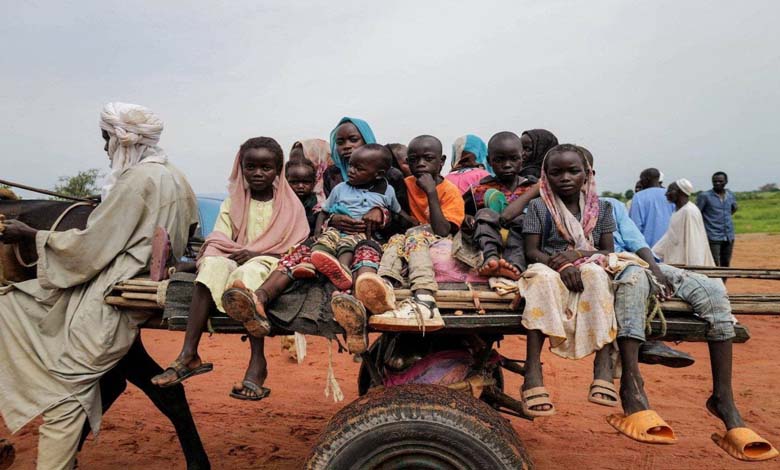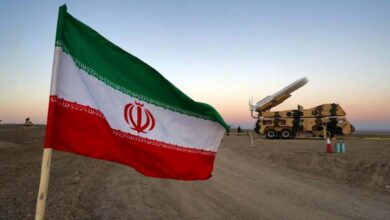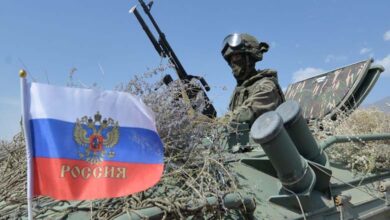Humanitarian Crossings in Sudan: A Relief Map Shackled by the Army’s Political Pressure

A year has passed since the Sudanese army announced a roadmap for humanitarian aid routes to reach those affected by the war.
Yet, despite the passing months, civilians have seen virtually no benefit from this aid. Many Sudanese, worn out by waiting and repeated promises, say the results remain at a glaring “zero.”
-
Sudanese Army Issues New Decision Banning Recruitment Operations for Allied Armed Movements
-
Escalation of Tensions Between Sudanese Army Leaders and Islamist Militias: What Are the Causes?
In March of last year, Sudan’s Ministry of Foreign Affairs issued an official statement outlining approved entry points for humanitarian aid from neighboring countries, confirming that army leadership had endorsed the map.
However, those declarations quickly faded, and the humanitarian impact of the war continued to cast a heavy shadow, exposing a wide gap between statements and actions.

The ministry stated that it had informed the UN of Port Sudan’s agreement to use the “Tine” crossing—linking Chad with El Fasher, the capital of North Darfur—for aid delivery. This was coordinated with the Chadian government, based on UN Security Council Resolution 1591.
The ministry also noted that this approval came despite concerns that the Chad border had become a key supply route for the Rapid Support Forces (RSF).
-
Crisis of Trust between the Sudanese Army and Its Militias… What Lies Behind the Recruitment Freeze Decision?
-
Khartoum: Liberation or Genocide? Sudanese Army Accused of War Crimes
New Developments
On Monday, the Sudanese Sovereign Council announced that its head and army commander, General Abdel Fattah al-Burhan, had received a call from UN Assistant Secretary-General Tom Fletcher, during which humanitarian conditions and aid access to El Fasher were discussed.
Following that, the statement said Sudan’s government had approved the UN’s request to establish logistical bases near El Fasher to support relief efforts in Mellit and Tawila in North Darfur.
However, the situation on the ground, as documented by the General Coordination of Displaced Persons and Refugee Camps in Sudan, tells a different story.
From El Fasher to Tawila, suffering continues in full view of the army and its allies, in what seems a deliberate attempt to mislead international officials with false promises contradicted by reality.
-
Khartoum’s Liberation Exposes Alliances: Muslim Brotherhood’s Congratulatory Message to the Sudanese Army Raises Questions
-
Human Rights Organizations: Sudanese Army Involved in Summary Executions That Have Claimed Dozens of Civilian Lives
From the Field
Adam Rajal painted a grim picture, reporting continued displacement from Zamzam and Abu Shouk camps toward Tawila, now sheltering over 1.5 million people.
He noted that displacement has spread beyond Tawila to Jebel Marra, Fanga, Deribat, Rokero, Golo, Nertiti, and other areas in Darfur.
Rajal warned that the humanitarian situation is critical, with rising daily deaths due to hunger, thirst, and disease.
Displaced people live in camps resembling detention centers, lacking basic services amid widespread infrastructure collapse. Military forces continue to detain activists and restrict movement, especially in Abu Shouk north of El Fasher.
-
The Sudanese Army Committed Horrific Field Executions in Khartoum
-
Sudanese Army’s Threats to its Neighbors: An Internal Distraction Signaling Regional Dangers
Map of Crossings
Dr. Salah El-Amin, an international humanitarian expert, said border crossings in Sudan are divided based on military control: the Sudanese army and its allies, the RSF, SPLM-N led by Abdelaziz al-Hilu, and Abdul Wahid al-Nur’s movement.
He explained that the army controls Argeen and Ashkeit in the north (Egypt border), the river port of Renk (South Sudan border), Red Sea port, Port Sudan airport, and Kassala airport in the east.
The army’s allies control the Tine crossing on the Chad border, while the RSF controls Adré (also on the Chad border), Aweil in Northern Bahr el Ghazal, and another crossing with South Sudan held by al-Hilu’s forces.
-
Arrests, Executions, and Violations… What Is Happening Inside Sudanese Army Prisons
-
Sudanese Army’s Military Gains Undermine Chances of a Peaceful Resolution to the Crisis
The army has rejected opening Adré, citing its use for military supplies to the RSF, and insists on using the Tine crossing in North Darfur.
WFP regional emergency coordinator in Sudan, Betty Ka, previously warned that “time is running out” amid intense fighting in El Fasher, Khartoum, and other hotspots.
She stressed that the army resists opening Adré, despite knowing that Tine becomes impassable during the rainy season, hindering humanitarian convoys.
-
The Sudanese Army and the Use of Chemical Weapons: Recent War Violations and Humanitarian Impact
-
Sudanese Army Violations Against Civilians: War Crimes Threatening the Country’s Future
Minimal Impact
El-Amin emphasized that delivering aid in Sudan is complicated by the entanglement of security, politics, and humanitarian issues.
He called for a unified relief effort with high-level coordination and international oversight.
He recommended leveraging local community networks, emergency kitchens, and grassroots initiatives, with controlling authorities limited to issuing movement permits.
He described the current aid reach as “very weak,” with only 6% coverage so far, due to international organizations’ reluctance to operate in risky environments.
-
The Sudanese Army’s Reliance on Mercenaries and Foreign Forces: The Collapse of Local Military Capabilities
-
Juba Opens Fire on the Sudanese Army and Its Islamist Militias… Details
Delays and Obstruction
Political analyst and civil society expert Kambal Abdelwahid said that humanitarian workers’ failure to obtain permits stems from the army’s strategy of “delaying and stalling,” claiming aid shipments might hide weapons.
He said many organizations have repeatedly reported severe difficulties and bureaucratic barriers that have significantly worsened the crisis.
These groups have called for opening and securing humanitarian crossings, ensuring safe corridors, and increasing international support to meet growing needs—calls that have largely been ignored by the de facto authorities in Port Sudan.
Since mid-April 2023, the Sudanese army and the RSF have been at war, resulting in thousands of deaths and millions of displacements. International voices are growing louder, urging an end to the conflict and calling for urgent aid, as famine and death spread due to closed relief corridors












